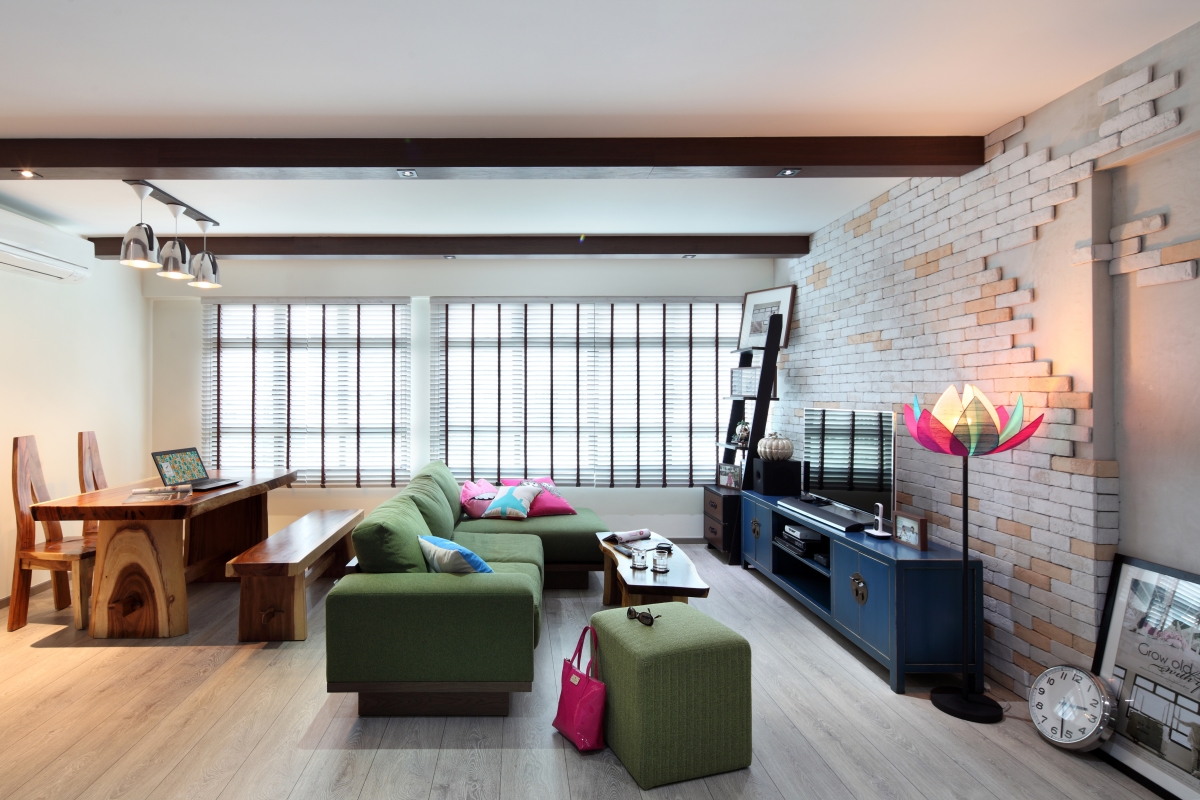Aluminium Ladders: Your Ultimate Guide to Safety and Versatility
Furnishings5 minutes read
387 views
387 views
Aluminium
ladders are versatile tools
that find applications in various industries and homes. Their lightweight yet
sturdy nature makes them a popular choice for tasks ranging from household
chores to industrial projects. In this guide, we'll delve into the world of
aluminium ladder, discussing how to choose the right one, the proper ways to
use them, and essential maintenance tips.
Why Aluminum Ladders?
Aluminum ladders have
gained popularity for several compelling reasons. Firstly, their lightweight
nature makes them easy to transport and maneuver, which is particularly
advantageous for both professional contractors and homeowners. Unlike heavier
alternatives like wooden or steel ladders, aluminum ladders are less strenuous
to carry around job sites or between different locations. This enhanced
portability also contributes to increased productivity as users can quickly set
up or reposition the ladder without excessive effort.
Secondly, aluminum
ladders offer remarkable durability and corrosion resistance. Aluminum is
naturally resistant to rust and corrosion, ensuring that these ladders maintain
their structural integrity even in challenging environments or adverse weather
conditions. This characteristic makes aluminum ladders suitable for both indoor
and outdoor use. Furthermore, aluminum's resilience doesn't compromise safety,
as manufacturers engineer these ladders to meet strict industry standards. In
essence, the combination of lightweight design, durability, and corrosion
resistance makes aluminum ladders a practical and reliable choice for various
applications, spanning from household chores to professional construction
projects.
Types of Aluminum
Ladders
There are several types
of aluminium ladders, each designed for specific purpose and preferences. Here
are some common types:
- Step Ladders: Step ladders are perhaps the most
common type of ladder. They have a self-supporting A-frame design with
steps on one side and are typically used for tasks like indoor household
chores, painting, and light maintenance work.
- Extension Ladders: Extension ladders are designed to
extend to various heights. They consist of two or more sections that can
slide apart or telescope for adjustable height. These ladders are great
for outdoor tasks like reaching high places for maintenance, construction,
and painting.
- Telescoping Ladders: Similar to extension ladders,
telescoping ladders can be extended to different heights. However, they
feature a unique mechanism that allows the ladder to collapse and retract
into a compact form, making them very portable and easy to store or
transport.
- Platform Ladders: Platform ladders, also known as
podium ladders, have a larger platform at the top rather than just steps.
This provides a stable and spacious platform to stand on, making them
ideal for longer-duration tasks, such as electrical work or maintenance.
- Multi-Position Ladders: These ladders can be configured
into various shapes and positions, such as A-frame, extension, or
scaffolding. They are versatile and can adapt to different types of tasks
and environments.
- Attic Ladders: Attic ladders are specifically
designed for accessing attics or loft spaces. They are usually foldable
and come with an integrated hatch or door.
- Word
Platform Ladders: Work
platform aluminium ladders feature a wide, flat top platform with safety
rails. They are designed for comfort and stability when working at heights
for longer periods, often used in construction and industrial settings.
- Step
Stools: While not
strictly ladders, aluminum step stools are small, lightweight platforms
with steps. They are handy for reaching items on shelves or performing
tasks that require a bit of extra height.
- Folding
Ladders: Folding ladders
are compact and can be folded into a small size for easy storage. They are
often used for light-duty tasks and are suitable for indoor use.
- Specialty
Ladders: Some specialty
ladders are designed for specific tasks, such as roof ladders for safe
access to roofs, orchard ladders for picking fruit, and combination
ladders that can switch between step ladder and extension ladder
configurations.
Why Choosing Alutech for Aluminium Ladders?
Nobody makes ladders as
well as Alutech. With almost a century of experience, we are capable of
anything. Alutech manufactures a wide variety of special purpose ladders for almost
any application or industry in addition to fixed access, library, and loft
ladders, including stepladders and stools, rolling work stands, extension, fire
ladders, agricultural ladders, platform ladders, and shelf and counter ladders.
·
Dedicated
For maximum safety and
performance, all of our ladders are expertly crafted to strict standards by
professional artisans. Fabricated from aircraft quality 6061-T6 aluminium
alloy, steel, hand-selected premium hardwoods, and fiberglass, ladders and
their components meet or exceed ANSI and OSHA requirements. Alutech offers a
substantial 5 Year Limited Warranty as well.
·
Excellent Service
Our product lines and
customer service divisions are equally extensive and full. There is always
knowledgeable, factory-trained support staff on hand to help with any
inquiries, design support, or technical support. For every project, Alutech
also provides shop drawings, guiding requirements, and counselling to help it
run smoothly and without problems.
·
Build to Order
You may obtain the
precise ladder customization you need from Alutech at extremely affordable
pricing. Although each library ladder Alutech makes is individually designed to
meet unique requirements and applications, the use of standard features and
parts allows for design flexibility, cost savings, and speedy assembly.
Factors to Consider
When Choosing Aluminium Ladders
When selecting aluminum
ladders, there are several essential factors to consider to ensure you choose
the right ladder for your needs. These factors include:
- Ladder
Type: Determine the
type of ladder that suits your intended tasks. Common types include step
ladders, extension ladders, platform ladders, and multipurpose ladders.
Each type is designed for specific applications, so choose one that
matches your requirements.
- Height
and Reach: Consider
the maximum height you need to reach. Extension ladders are adjustable and
provide greater reach, while step ladders have a fixed height. Ensure the
ladder's height is sufficient for your tasks.
- Weight
Capacity: Check the
ladder's weight rating to ensure it can support your weight and any tools
or materials you'll be carrying. Exceeding the weight capacity can lead to
accidents and ladder damage.
- Safety
Features: Look for safety
features like non-slip rungs, stabilizing feet, and secure locking
mechanisms. These features enhance stability and reduce the risk of
accidents.
- Usage
Environment: Think
about where you'll be using the ladder. Indoor and outdoor environments
might require different features, such as weather-resistant coatings for
outdoor use.
- Ease
of Use: Ensure the aluminium
ladders are easy to set up, adjust, and use. Complicated mechanisms can
lead to frustration and potential safety hazards.
- Warranties
and Brand Reputation: Consider
purchasing from reputable brands that offer warranties. A good warranty
reflects the manufacturer's confidence in their product's quality.
- Budget: Determine your budget range and
try to find a ladder that meets your requirements without compromising on
safety and quality.
Remember that safety
should be a top priority when choosing a ladder. Always follow proper ladder
usage guidelines and take necessary precautions to prevent accidents.
Safety First: Using Aluminum
Ladders Responsibly
While aluminium ladders offer exceptional safety features, it's crucial to
follow best practices to ensure your well-being:
- Level
Ground: Always set up the
ladder on a flat and stable surface to prevent wobbling or tipping.
- Weight
Limit: Respect the
ladder's weight limit to avoid overloading, which can compromise stability.
- Three-Point
Contact: Maintain three
points of contact (two feet and one hand or two hands and one foot) while
on the ladder to reduce the risk of falling.
- Proper
Angle: When using
extension ladders, follow the 4-to-1 rule: for every four feet of ladder
height, the base should be one foot away from the wall.
- Inspection: Before each use, inspect the
ladder for any damage, such as dents, cracks, or loose parts.
Step-By-Step Guide to
Climbing Aluminum Ladders
- Begin facing the ladder and
maintain a firm grip on the rungs.
- Step onto the ladder using one foot
while holding onto the side rails.
- Keep your body centered between the
side rails as you climb.
- Avoid overreaching; reposition the
ladder if needed.
Maintenance and
Inspection
Maintaining an aluminum
ladder is essential to ensure its longevity and safe use. Here are some steps
you can follow to properly maintain your aluminum ladder:
- Regular Cleaning: Clean your ladder regularly to
prevent dirt, dust, and debris from accumulating. Use a soft brush or
cloth to wipe down the ladder's surfaces. Avoid using harsh chemicals that
could damage the aluminum.
- Inspect for Damage: Before each use, inspect the
ladder for any signs of damage, such as cracks, dents, or bent rungs. If
you notice any issues, do not use the ladder until it's repaired or
replaced.
- Store Properly: Store your aluminium ladders in a
dry, cool place away from direct sunlight and extreme temperatures. This
helps prevent the aluminum from deteriorating or warping.
- Avoid Corrosion: Aluminum doesn't rust like iron,
but it can still corrode. Keep your ladder away from corrosive substances
and chemicals. If the ladder does come into contact with corrosive
materials, clean it thoroughly and dry it to prevent any potential damage.
- Lubricate Moving Parts: If your ladder has hinges, locks,
or other moving parts, lubricate them with a suitable lubricant to ensure
smooth operation. This prevents parts of aluminium ladders from seizing up
or becoming difficult to use.
- Tighten Bolts and Screws: Over time, the bolts and screws on
your ladder may become loose due to regular use. Check and tighten them as
needed to ensure the ladder's stability.
- Avoid Overloading: Every ladder has a weight capacity
indicated by the manufacturer. Never exceed this weight limit, as it could
lead to structural damage and compromise your safety.
- Follow Usage Guidelines: Always follow the usage guidelines
provided by the ladder's manufacturer. Different ladders may have specific
instructions for safe use and maintenance.
By following these
maintenance steps and using your aluminum ladder responsibly, you can ensure
its safety, longevity, and optimal performance over time.
Advantages of Aluminum
Ladders over Other Materials
Aluminum ladders offer
several advantages over ladders made from other materials, making them a
popular choice for various applications. Here are some of the key advantages of
aluminum ladders:
- Lightweight: Aluminium is a lightweight
material, making aluminium ladders easy to transport, set up, and maneuver.
This is especially advantageous when you need to move the ladder
frequently or work in different locations.
- Corrosion
Resistance: Aluminium
naturally forms a protective oxide layer that helps prevent corrosion and
rust, even when exposed to harsh weather conditions or chemicals. This
corrosion resistance ensures the longevity of the ladder, making it
suitable for both indoor and outdoor use.
- Durable and Sturdy: Despite its lightweight nature,
aluminium is a strong and durable material. Aluminium ladder can withstand
heavy loads and provide a stable platform for users, ensuring safety
during various tasks.
- Low
Maintenance: Due to its
corrosion-resistant properties, aluminium ladder require minimal
maintenance compared to ladders made from materials like steel or wood.
There's no need to worry about regular painting or sealing to prevent
deterioration.
- Non-Magnetic: Aluminum ladders are non-magnetic,
which can be advantageous in environments where magnetic interference
could pose a problem, such as in industrial settings or areas with
sensitive equipment.
- Versatility: Aluminium ladders are available in
a wide range of designs and sizes to suit different needs. Whether you
require a step ladder, extension ladder, or platform ladder, there's an
aluminium option to fit the task.
- Conductive
Properties: While this
can be both an advantage and a disadvantage depending on the situation,
aluminium is a good conductor of electricity. This property can be
beneficial when working around electrical equipment, as it helps to
prevent static buildup.
- Cost
Effective: While
initial costs may vary depending on the ladder's design and features,
aluminium ladder generally offer good value for their durability and long
lifespan, making them cost-effective over time.
Overall, the advantages
of aluminium ladder, including their lightweight nature, corrosion resistance,
durability, and versatility, make them a preferred choice for a wide range of
applications, from household chores to industrial tasks.
FAQs (Frequently Asked Questions)
Are aluminium ladders
safe for outdoor use?
Yes, aluminum ladders
are generally safe for outdoor use. They are lightweight, durable, and
resistant to weather elements like rain and sun. However, to ensure safety,
it's important to inspect the ladder for any signs of damage, ensure proper
setup on stable ground, and follow safety guidelines such as maintaining three
points of contact and avoiding overreaching. Regular maintenance and adherence
to safety practices are essential for the safe use of aluminum ladders
outdoors.
Can aluminum ladders be stored outside?
While aluminum ladders
are generally resistant to rust and corrosion due to their aluminum
construction, it's advisable to store them indoors or in a covered area
whenever possible. Exposure to outdoor elements such as rain, sunlight, and
temperature fluctuations over time can still cause some wear and deterioration,
potentially affecting the ladder's overall lifespan and safety. If outdoor
storage is the only option, consider using a weatherproof cover or shelter to
minimize potential damage. Regular cleaning and maintenance can also help
prolong the ladder's durability if stored outside.
Can I use an extension
ladder for indoor tasks?
Yes, you can use an
extension ladder for indoor tasks, but there are a few things to consider.
Extension ladders are designed for outdoor use but can be used indoors if the
space allows for their length and height. Ensure the ladder is stable and won't
damage floors or walls. Be cautious of overhead obstacles and choose an aluminium
ladders with rubber feet to prevent slipping. For many indoor tasks, a step
ladder might be a safer and more practical choice due to its smaller size and
stability. Always prioritize safety and choose the appropriate ladder for the
task and environment.
How do I clean my
aluminium ladder?
To clean your aluminum
ladder, start by removing any loose debris or dirt using a broom or brush.
Then, mix a solution of mild dish soap and warm water. Use a soft cloth or
sponge to scrub the ladder's surface, paying extra attention to any stubborn
spots. Avoid abrasive materials that could scratch the aluminum. Rinse
thoroughly with water and dry the ladder completely to prevent water spots. If
there are any stains or oxidation, you can use a mixture of vinegar and water
or a commercial aluminum cleaner following the product's instructions. Remember
to wear protective gloves and work in a well-ventilated area when using
chemical cleaners.
What is the maximum
height an aluminium extension ladder can reach?
The maximum height an
aluminum extension ladder can reach typically ranges from around 15 to 60 feet,
depending on the specific ladder model and manufacturer. These ladders are
designed with multiple sections that can be extended or collapsed, allowing
users to adjust the ladder's height according to their needs. However, it's
important to follow the manufacturer's guidelines and safety recommendations
when using extension ladders, ensuring proper setup and stability to prevent
accidents and injuries.
Can aluminium ladders be used for electrical work?
Yes, aluminum ladders
can be used for electrical work, but they need to be equipped with specific
safety features. Aluminum is a good conductor of electricity, so using a
regular aluminium ladders without any insulation can be hazardous when working
around live electrical components. However, there are aluminum ladders designed
for electrical work that have non-conductive features, such as rubberized feet
and insulated rails, to minimize the risk of electric shock. When choosing a ladder
for electrical work, it's crucial to select one that meets safety standards and
is specifically labeled as suitable for such tasks.
Can I paint my aluminium ladder?
Yes, you can paint your
aluminum ladder. Start by cleaning the ladder thoroughly to remove dirt and
grease. Next, lightly sand the surface to create a better adhesion for the
paint. Apply a coat of primer designed for metal surfaces. Once the primer is
dry, you can apply a paint specifically formulated for metal or aluminum. This
will help provide a durable finish and prevent peeling or chipping. Allow the
paint to dry completely between coats, and consider applying a clear sealant
for extra protection.
How do I secure an extension ladder while in use?
To secure an extension
ladder while in use, follow these steps:
·
Choose a stable surface: Place the ladder on a firm, level surface to
prevent tipping.
·
Set proper angle:
Position the ladder at a 75-degree angle, with the base one-quarter of the
ladder's working length away from the wall.
·
Lock extension:
Ensure aluminium ladders sections are fully extended and locked securely in
place.
·
Use stabilizers:
Attach ladder stabilizers or standoffs near the top to increase stability and
keep the ladder away from the wall.
·
Secure top and bottom: Secure the ladder's top by hooking it over a sturdy
support and fasten the bottom with non-slip feet or spurs dug into the ground.
·
No overreach:
Always maintain your belt buckle within the ladder's sides and avoid
overreaching.
·
Regular inspections: Check for any defects or damage before each use and
replace if necessary.
Following these steps
will help ensure your extension ladder is properly secured and safe to use.
Conclusion
In conclusion, aluminum
ladders offer a range of significant advantages that make them a preferred
choice for various applications. Their lightweight yet sturdy construction
makes them easy to transport, set up, and store, enhancing both convenience and
efficiency. Additionally, aluminium's corrosion-resistant properties ensure a
longer lifespan, even in outdoor or damp environments.
The versatility of aluminium ladders are another key factor, as they are available in
various types and designs to suit different needs, from simple household tasks
to more complex industrial uses. Their inherent strength, coupled with modern
manufacturing techniques, results in ladders that can safely support varying
weights, providing reliable support for users. Furthermore, aluminum ladders
require minimal maintenance compared to other materials, reducing upkeep costs
and efforts. This aspect contributes to their cost-effectiveness and overall
value in the long run.
Request for quotes and we'll match you with a selection of Interior Designers!
Previous
The Beginner's Guide to Home Decorating


 Sign Up with Google
Sign Up with Google

.jpg)